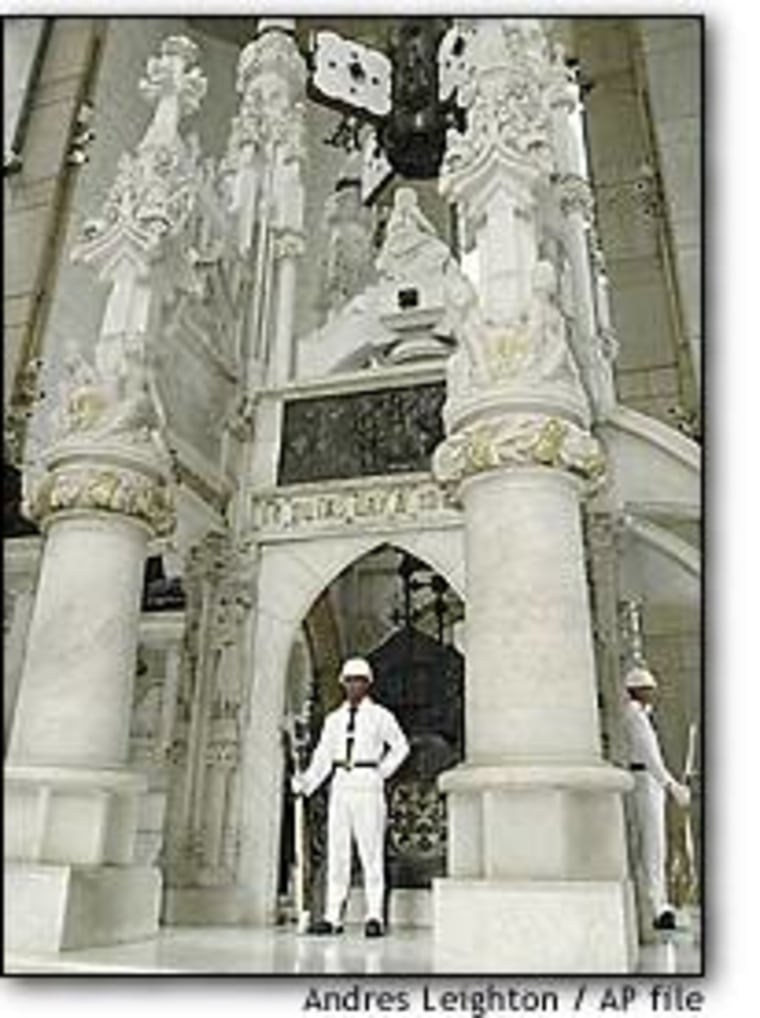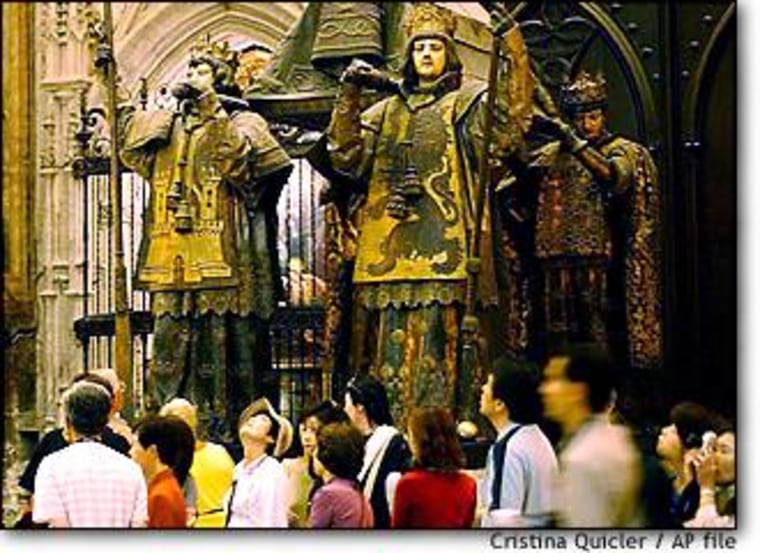Life was a journey for Christopher Columbus, but the traveling didn’t stop after he died. In the five centuries since the first European explorer to reach the Americas died, his remains have been moved so many times that today both Spain and the Dominican Republic claim to have them. This month, scientists and genealogists will finally test the DNA of the remains in Spain, along with the remains of Columbus’ son and brother, in hopes of resolving the dispute.
The anthropological analysis completed in August already has debunked several theories: While many historians had theorized the tomb contained the remains of several people, data suggest that only one person was buried in the Spanish tomb. The analysis also showed that Columbus’ son stood about 5-foot-8 (172 centimeters), which was well above average height for the time.
Columbus died in the Spanish city of Valladolid in 1509, and his body was initially buried in Spain. But his will requested he be buried on the Caribbean island of Hispaniola (the modern-day Dominican Republic and Haiti), and the explorer’s remains were taken there in 1537. In 1795 Spain lost the territory to France, and the Spanish government decided to move the remains to Cuba, where they stayed for just over 100 years. Political upheaval caused by the Spanish-American War in 1898 persuaded the authorities to send the remains back to Seville.
At least, that’s how the story goes in Spain.
‘Challenge of a lifetime'
“This is the challenge of a lifetime for me, or any other genealogist, because Christopher Columbus is one of the most important historical figures in the last 1,000 years,” said Marcial Castro, the high school teacher responsible for initiating the project.
Castro, along with his college biology professor, Sergio al Garrada, asked Jose Antonio Lorente to join the study. Lorente, director of the University of Granada’s Genetic Identification Laboratory, is a forensic scientist who usually works on criminal investigations.
In June, Lorente and his team opened the bronze tomb believed to be that of Columbus and took out several bone fragments the size of peanuts. The scientists are extracting DNA samples for comparison with DNA taken a year ago from the remains of Columbus’ youngest brother, Diego, as well as from the explorer’s illegitimate son Hernando.
“The main challenge for me is going to be the quality of the DNA rather than the quantity of it,” Lorente said.
In DNA analysis, the double-helix chemical structure has to be sufficiently well-preserved for the tests to be successful. Lorente hopes to begin the DNA testing next week, but the results will not be published for several months.
The Spanish team is collaborating with scientists in Germany and Italy as well as Bruce Budowle, senior scientist at the FBI’s forensic science laboratory. Results from Lorente’s lab in Granada will have to be duplicated in Germany or France in order for the study to be considered valid. If the study is successful, it would further show the importance of using forensic science to solve other historical debates.
“We want to show how far we can go with forensic science and see if there are limits with 500-year-old bones,” Lorente said.
Who is Columbus’ father?
The team also hopes to establish whether Columbus was of Spanish or Italian origin by comparing his DNA with that of Carlos, Prince of Viana, who lived in Mallorca. The various tales about Columbus’ parentage assert that he may have been Carlos’ illegitimate son, or the son of a wool trader from Genoa.
DNA samples from the prince’s remains are already available from earlier experiments.
The question of where the remains of Columbus lie is a curiosity for many Spaniards, but Professor James Axtell, who teaches history of exploration at the College of William and Mary in Virginia, doesn’t think that resolving the dispute will have much of a historical impact.

“I think that the results will be important for tourism and national pride, but it won’t do much for scholarship,” he said. “For historians it is more important to understand where and how someone lived rather than where they are buried.”
Axtell argued that postmortem analysis is more useful historically for understanding the cause of death and any information related to physical characteristics such as height.
In 1992, a U.S. team of scientists presented the Spanish government with a similar DNA project to analyze the remains, but authorities in Seville turned down the request and would not allow the tomb to be opened.
So far, the Dominican Republic refuses to let the Spanish team extract DNA samples from the urn that they claim contains Columbus’ remains — an artifact discovered in 1877. Castro and Lorente traveled to Santo Domingo in early September to try to persuade the authorities there to cooperate in the latest experiment. They are still waiting for the Dominican government’s response.
